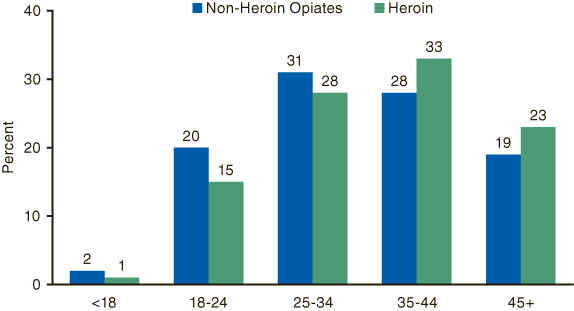The Drug and
Alcohol Services Information System (DASIS) is an integrated data
system maintained by the Office of Applied Studies, Substance Abuse and
Mental Health Services Administration (SAMHSA). One component of DASIS
is the Treatment Episode Data Set (TEDS). TEDS is a compilation of data
on the demographic characteristics and substance abuse problems of
those admitted for substance abuse treatment. The information comes
primarily from facilities that receive some public funding. Information
on treatment admissions is routinely collected by State administrative
systems and then submitted to SAMHSA in a standard format. TEDS records
represent admissions rather than individuals, as a person may be
admitted to treatment more than once. State admission data are reported
to TEDS by the Single State Agencies (SSAs) for substance abuse
treatment. There are significant differences among State data
collection systems. Sources of State variation include completeness of
reporting, facilities reporting TEDS data, clients included, and
treatment resources available. See the annual TEDS reports for details.
Approximately 1.8 million records are included in TEDS each year.
The DASIS Report is prepared by the Office of Applied
Studies, SAMHSA; Synectics for Management Decisions, Inc., Arlington,
Virginia; and by RTI International in Research Triangle Park, North
Carolina (RTI International is a trade name of Research Triangle
Institute).
Information and data for this issue
are based on data reported to TEDS through April 11, 2005.
Access the latest TEDS reports
at:
http://www.oas.samhsa.gov/dasis.htm
Access the latest TEDS public use files at:
http://www.oas.samhsa.gov/SAMHDA.htm
Other substance abuse reports are available at:
http://www.oas.samhsa.gov
|





